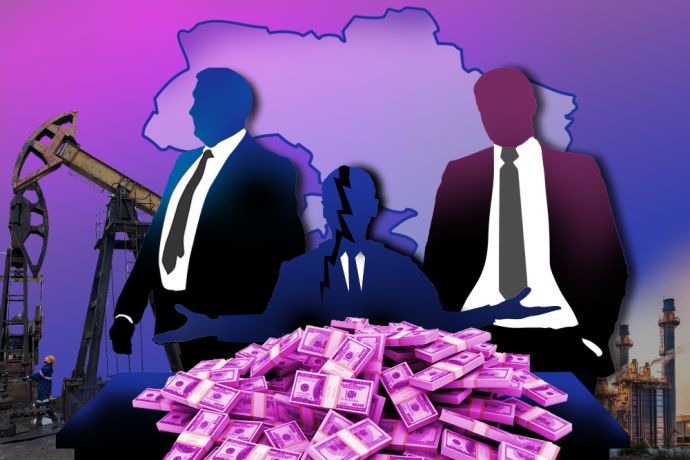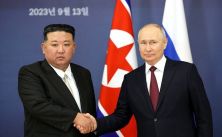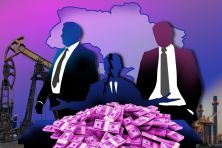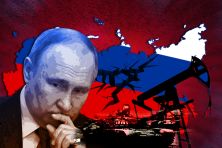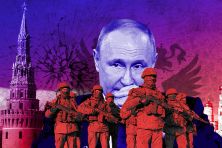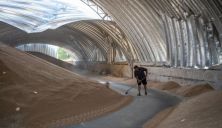By Oleksiy Kushch, economist, financial analyst
Read the original text at The Gaze.
Corruption in Ukraine is becoming a common theme in criticism of reforms in a country that is fighting the most difficult continental war in Europe since World War II. Corruption in Ukraine has always been identified with the oligarchs. Russia’s war against Ukraine, paradoxically, has become one of the key factors in de-oligarchization and has contributed to a reduction in the systemic level of corruption.
Suffice it to say that, as such, oligarchs in Ukraine are gradually becoming a relic of the past and losing their political influence.
Currently, the trial of one of the largest oligarchs in Ukraine, Ihor Kolomoisky, is underway in Kyiv, whom the opposition has often linked to the current government and hinted at his “untouchability.”
However, as it turned out, such suspicions were unfounded. Kolomoisky is being held in custody with the right to be released on a huge bail of UAH 3.9 billion. He faces serious charges.
The pearl of his Privat financial and industrial group, Ukrnafta, has been returned to the public administration system and is currently demonstrating excellent results even during the war, which once again emphasizes the losses to the state budget from the transfer of this asset to oligarchic control.
Another oligarch, Dmytro Firtash, has been under arrest in Austria for many years and is awaiting extradition to the United States.
At the same time, he continued to control his assets in Ukraine until a certain point. This has now become impossible: the basis of his rental business, regional gas companies (companies that transport gas to consumers), have been returned to state control.
The same fate befell the companies that transmit electricity to consumers, which belonged to Russian business and Ukrainian financial and industrial groups.
Some of Ukrainian oligarchs’ assets have been reduced by the war. For example, Rinat Akhmetov and his group lost two steel mills in Mariupol that were destroyed by the Russians.
We can already draw interim conclusions.
Over the past year and a half, Ukrainian oligarchs have largely lost their economic base.
Some of their assets have been returned to state ownership or state management (among the most important cases are the return of Ukrnafta to the state management system, the transfer of regional gas companies and electricity distribution operators to state management, and the return of titanium mining to the state);
Some assets were lost as a result of the Russian aggression (occupied or destroyed). The most tragic event in this context is the destruction of two metallurgical plants in Mariupol;
Media assets of oligarchs were transferred to the state as part of the common national information space;
The influence of oligarchs on domestic political forces, including parliamentary ones, has significantly decreased;
Significant amounts of international financial assistance have actually brought Ukrainian oligarchs into the focus of international law enforcement agencies.
In other words, we can observe a combination of two main de-oligarchization factors in Ukraine:
positive (return of oligarchs’ assets to state ownership and/or management; changes in the political and law enforcement environment during the war)
negative (destruction of oligarchs’ assets as a result of the war).
Changes in the Rules of the Game
The country’s internal reserves lie in a systemic change in the rules of the market game, which is impossible without overcoming corruption. Of course, this issue in Ukraine cannot be solved solely by the process of deoligarchization.
Here we can also recall the theory on the effectiveness of corruption deals put forward by US political scientist Samuel Huntington, who noted,”In terms of economic growth the only thing worse than a society with a rigid, overcentralized, dishonest bureaucracy is one with a rigid, overcentralized, honest bureaucracy.”
Hereafter, we have to choose what is more useful for Ukrainians: simplification of permitting procedures for a few domestic FIGs or economic growth and inclusive distribution of national income among all groups of the population.
Studies by Western economists have shown that a 1% increase in corruption slows economic growth by 0.4%, while a one percentage point reduction in corruption pressure increases GDP growth by 0.72%.
A fairly simple calculation can be made here.
In the Corruption Perceptions Index (CPI), compiled by the international non-governmental organization Transparency International, Ukraine ranks low with 30+ points.
If we managed to reach the level of Chile, which is in the top ten with 60 points +, in the next five years, it would mean adding 35 points + to our corruption perception, which could translate into economic growth after the war of more than 25% over the five-year period.
Growth in the range of 5%+ is exactly what can give Ukraine effective tools to fight poverty and minimize the risk of labor migration.
But the danger of corruption is not only in direct economic losses.
It is also a distortion of the rules of fair market play between millions of economic agents, when large corporations win a priori through political lobbying, and small and medium-sized businesses end up either in the shadow economy or with a simplified taxation system that turns into a single lifeline.
This is also about building a rent-seeking philosophy in both governing the country and doing business. What we call the rent-seeking, corrupt, raw material model of the economy.
The Andvig-Moyen theoretical model suggests that an increase in the number of corrupt officials proportionally reduces the likelihood of detecting corrupt transactions and at the same time reduces the potential risks and costs of the bribe-giver in finding the right counterparty, i.e. someone to “give” to.
What in other countries can result in imprisonment, multi-million dollar fines, or even the death penalty, in Ukraine is limited to a fairly moderate liability.
This model maximizes the incentive to make money from corruption rents rather than from the real economy, to get involved in politics, etc.
The income received from rents in this system cannot be invested anywhere except in the acquisition of new corrupt rents, which makes it impossible for society to receive a socially significant effect from these transactions – they do not pay taxes and do not increase legal GDP.
Chinese economist Chang-Jing Wei has discovered an interesting pattern: if a country falls down the Corruption Perceptions Index scale from Singapore to Mexico (138th place and 28 points), the level of official taxation increases by 30% (corruption rent or fixed tax for the “roof”).
According to Chan-Jing Wei, corruption leads not only to an increase in hidden transaction costs, but also to the inability of investors to operate without a “local” cover:
“Corruption makes the relationship between a foreign investor and government officials, such as those required to obtain export licenses or permits to organize production, less transparent and more expensive. In this case, the existence of a local economic partner reduces transaction costs for a foreign investor.”
And not all investors, especially in the segment of systemic companies, are ready for such “cooperation” with local corrupt “elites”.
There are more than 35 points in the corruption perception index between Ukraine and Chile.
According to the research of Vito Tanzi and Hamid Davoudi, one point of the index is a change of 1.3% in non-tax revenues and 1% in tax revenues, meaning that after the war, we could collect 45.5% more non-tax payments to the budget and 35% more tax revenues, which means hundreds of billions of hryvnias that go to form corruption rents.
As Tantsi and Davudi wrote: “When corruption plays a large role in the selection of projects and their implementers, the result is a budget skewed toward capital projects. White Elephants and Cathedrals in the Desert are produced. Some projects are completed but never operated at full capacity. Some are much larger and more complex than necessary. The quality of some is so poor that they are constantly in need of repair, and their performance is far below expectations. Under such conditions, it is not surprising that capital expenditures do not have the impact on economic growth that economists expect.”
Corruption deprives the poorest segments of the population of income: on average, a one-point increase in corruption leads to a 7-8% reduction in income for the poorest 20% of the country’s population per year.
Future Prospects
In the economic context, it can be argued that the war has indeed become a key de-oligarchizer and a process of reducing the corrupt influence on the government by the oligarchs, who are practically gone.
That is, the ongoing de-oligarchization is a key tool in the fight against the corruption.
However, the final victory over corruption is possible only after the formation of a stable middle class in Ukraine, which will create demand for ideological political forces and the establishment of fair and transparent rules.
Until then, minimizing the corrupt influence is possible through the application of harsher penalties for corruption under martial law.
This is exactly what President of Ukraine Volodymyr Zelenskyy was talking about when he equated corruption to high treason.

